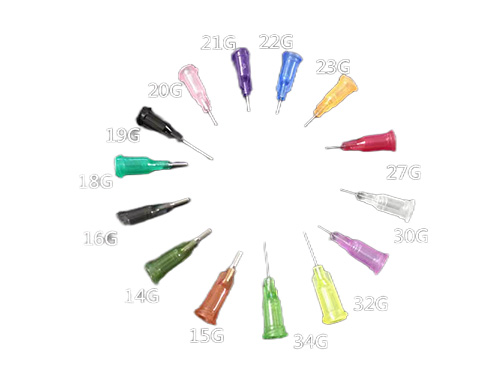New Trends in Seedling Trays: Modular Design Enhances Sowing Flexibility
2025-04-11 14:01:22
In agriculture and horticulture, sowing serves as a critical initial step directly impacting crop growth and final yields. As the "first home" for seeds, the design quality of seedling trays profoundly influences sowing effectiveness. In recent years, modular design has emerged as a new trend in seedling tray development. This innovative design introduces unprecedented flexibility to the sowing process, effectively overcoming limitations of traditional trays and better adapting to diverse planting needs, injecting new momentum into improving sowing quality and efficiency.
I. Limitations of Traditional Seeding Trays
1.Single Functionality
Traditional trays primarily fulfill basic sowing and seedling functions with limited expandability. When facing complex planting scenarios—such as varying temperature, humidity, and aeration requirements for different crops—traditional trays struggle to adjust structurally or functionally to meet these specialized needs, restricting their applicability under diverse conditions.
2.Inflexible Dimensions
Their size specifications are often fixed, from overall length/width to internal cell dimensions, making adjustments difficult based on seed types or planting density. Fixed trays may fail to provide optimal environments for small seeds requiring dense sowing or large seeds needing growth space, compromising germination rates and seedling quality.
3.Poor Adaptability to Changing Needs
During planting, growers may encounter phased seedling cultivation or varying strategies across regions. Due to structural and functional limitations, traditional trays struggle to provide precise, suitable conditions for seeds and seedlings under complex demands, hindering refined management.
II. Conceptual Analysis of Modular Seeding Trays
1.Definition
Modular trays are innovative sowing tools composed of multiple independent, function-specific modules. Designed to be compatible, these modules can be freely combined, disassembled, and reconfigured based on sowing tasks, creating highly personalized systems to meet diverse planting scenarios.
2.Module Composition and Classification
Cell Modules: Core components housing seeds and providing space for germination and early growth. Available in various sizes and shapes: small cells for tiny seeds enable precise sowing density control; large cells for big seeds offer ample growth space. Shapes vary too—square cells optimize space use, while circular cells suit natural root growth patterns.
Connector Modules: Securely link cell modules and functional modules into a stable tray structure. Designed for tight, secure connections while allowing easy disassembly for adjustments.
Functional Expansion Modules: Greatly enhance tray functionality. Examples include drainage modules regulating water discharge based on soil moisture and crop tolerance; thermal insulation modules maintaining seed warmth in cold environments; and ventilation modules improving airflow to meet oxygen demands.
III. Operational Mechanism of Modular Design
1.Module Combination Process
Users first select cell modules based on planting plans and seed traits. Connector modules then assemble the cells into a base framework. Finally, functional modules are added based on environmental and crop needs—e.g., adding drainage modules in humid climates or insulation modules in areas with large temperature fluctuations—to create a fully customized tray.
2.Synergistic Module Functioning
Modules work collaboratively. Cell modules provide growth space, connectors ensure structural stability, and functional modules optimize environments. For instance, drainage modules work with cells to remove excess water, while insulation modules maintain temperature stability, creating a comprehensive growth environment.
IV. Flexibility Advantages of Modular Design
1.Adapting to Diverse Crops
With cell module diversity, vegetables, flowers, and grains can find suitable cells. Modular trays flexibly combine different cell sizes and shapes to accommodate multiple crops in one tray, ensuring optimal conditions and boosting land use efficiency.
2.Scalable Sowing
Modular trays adapt to changing planting scales. Expanding? Add cell modules and connectors. Reducing scale? Remove excess modules, avoiding waste from fixed trays.
3.Meeting Special Needs
For phased seedling cultivation, modular trays excel. Install insulation modules early for warmth, then switch to ventilation modules as seedlings grow, enabling refined management.
4.Storage and Transport Convenience
Disassembled modules reduce storage space. Individual module packaging lowers transport costs and damage risks compared to whole trays.
V. Selection Criteria for Modular Trays
1.Module Compatibility
Ensure seamless compatibility between cell, connector, and functional modules to avoid connection issues.
2.Material Quality
Prioritize durable, corrosion-resistant, eco-friendly materials. Cell modules must withstand frequent use and soil erosion; functional modules need specialized performance (e.g., insulation, drainage).
3.Design Rationality
Cell dimensions/shapes should align with seed and root growth patterns. Connectors must be user-friendly, and functional modules practically enhance sowing.
4.Brand and After-Sales Support
Reputable brands offer reliable products and after-sales services, including parts supply, repairs, and training.
VI. Usage and Maintenance Guide
1.Pre-Use Assembly and Preparation
Module Inspection: Check for damage, deformation, or blockages.
Assembly: Plan module order, connect cells into a framework, then install functional modules.
Cleaning and Disinfection: Remove debris and disinfect to ensure a safe environment.
2.Operational Tips
Standardized Sowing: Control depth and spacing based on crop requirements.
Environmental Adaptation: Use functional modules to respond to climate changes (e.g., ventilation in heat, drainage in rain).
Real-Time Monitoring: Adjust modules based on seedling growth (e.g., modifying ventilation or drainage).
3.Maintenance
Cleaning: Remove soil and residues after use.
Inspection and Repair: Regularly check modules; repair minor issues promptly.
Storage: Store modules in dry, ventilated areas to prevent damage.
VII. Conclusion
Modular seedling trays, as an innovative breakthrough, offer significant advantages to agriculture and horticulture with their flexibility. They overcome traditional limitations in function, size, and adaptability, accommodating diverse crops, scaling sowing needs, and meeting specialized requirements while simplifying storage and transport. By following selection and maintenance guidelines, growers can maximize modular tray potential, enhancing efficiency and quality, and driving the industry toward modernization and precision.

It adopts electrical integration and can be started by pressing the fully automatic button ...

The XP750 seeder has stable performance, excellent product quality, simple and convenient o...

It adopts electrical integration and can be started by pressing the fully automatic button ...

Needle list Seed nozzle model Different models Sowing types are different...



